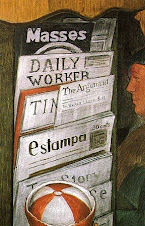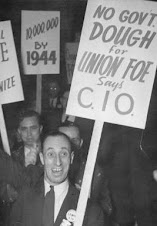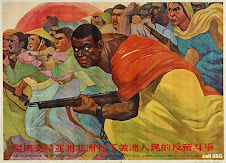
Published Oct 14, 2007 11:33 PM
Ernesto “Che” Guevara was born into a middle-class Argentine family. As a child he suffered from asthma. It was in his illness that he began to desire a life helping the afflicted. He made it his life’s goal to become a doctor.
He went to medical school and became trained as a physician. Che traveled on a motorcycle across Latin America, an experience which he wrote about. The book was later adopted for a 2004 movie of the same name, “Motorcycle Diaries.” He saw the horrors of poverty, starvation, war and repression, and it was at this point that he became committed to social change.
Until his death he affirmed that he was still a doctor, but he committed himself at an early age to fight against social illnesses. As he began to discover that poverty, war, starvation and brutality were symptoms of a worldwide disease called imperialism, he believed that the resistance of the people throughout the world could cure this affliction and allow humanity to taste real freedom.
First Che went to Guatemala when Jacobo Arbenz was president, in the early 1950s. Arbenz was the democratically elected leader who was nationalizing land, and who had legalized the Guatemalan Communist Party. Che put his hope into the democratic process, but the U.S. imperialists did not. A U.S.-backed coup overthrew Arbenz in 1954 and installed a right-wing dictator.
Che learned that reform and elections could not provide the path to power for the oppressed peoples. Action and armed struggle were necessary. Che soon joined with Fidel Castro and his July 26th Movement and they went on to bring down the U.S.-backed dictator Fulgencio Batista on Jan. 1, 1959. Now, the Cuban people had a country of their own. As that revolution developed, socialism was declared the road that the people would take to find liberation.
In Cuba, Che was involved in the efforts to nationalize the land and to administer the national bank. He also served in the revolutionary courts which brought justice to those who had brutally repressed the Cuban people for so long.
Che wrote an essay entitled “Man and Socialism in Cuba,” in which he laid out how socialism’s goal was the creation of a “new socialist human” or a new human race, cleansed from the greed and brutality that was inherent in capitalist relations.
Che traveled throughout the world to many of the socialist countries trying to encourage unity among them, as he viewed them each as peoples who formed part of the world revolution.
In 1964 while the Cuban masses and its leadership were constructing socialism, Che left Cuba to help organize armed struggle on behalf of other peoples fighting for liberation. He joined the fight of the people of the Congo. Later he attempted to form a guerrilla group in Bolivia. While he was engaged in that struggle in Bolivia, he was captured the U.S. trained Bolivian army, and with CIA agent Felix Rodriguez on site, put to death.
Che lives on as a symbol to oppressed people everywhere. One can hardly attend a progressive demonstration without seeing the image of Che Guevara, based on a photograph taken by Alberto Korda.
Reactionary pro-imperialist forces have recently attempted to tarnish Che’s image with a propaganda campaign claiming his example is already forgotten, but the proof of Che’s example sits on the island of Cuba, where there are jobs, health care, and education for all, and the workers and farmers are in power.
The proof of Che’s example sits also in Venezuela, where workers are attempting to win and build a socialist society through the Bolivarian revolution. The proof of Che’s example sits in Zimbabwe, where the African people are getting their land back from the colonialists who have illegally owned it for so long.
Che was on the right side of history. He was on the side of the oppressed, struggling to free themselves from the chains that bind them. He will live on as a symbol of the quest for permanent worldwide revolution.
Long Live Che Guevara! Long Live the Socialist Revolution!
--------------------------------------------------------------------------------
Articles copyright 1995-2007 Workers World. Verbatim copying and distribution of this entire article is permitted in any medium without royalty provided this notice is preserved.










































No comments:
Post a Comment